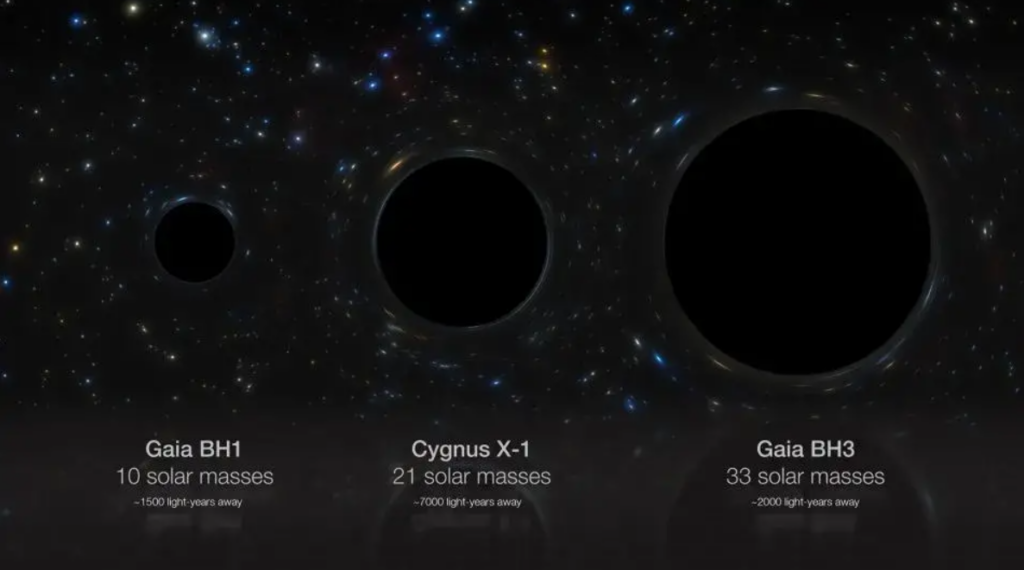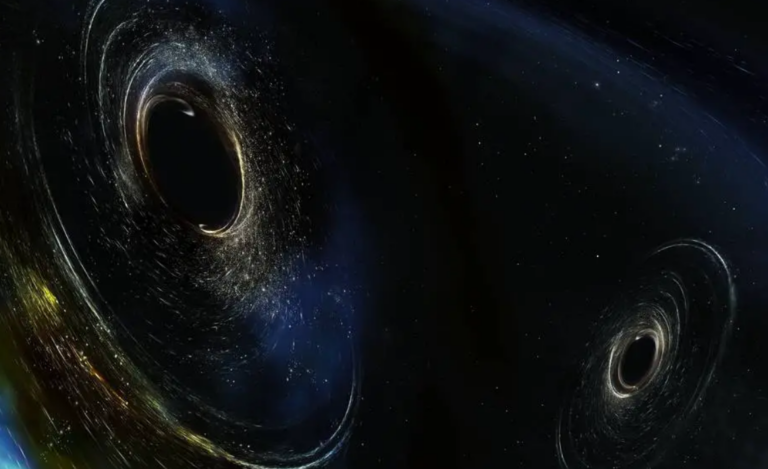A youthful black hole was propelled into outer space at a speed of 3 million mph due to gravitational waves.
One black hole has become an expert at the art of relaxation.
This new body thus came into being after two other black holes merged and obtained a strong push during its formation, making it shift from its initial location. It was launched at a humongous speed equivalent to 5 million kilometers (3. 1 million miles) per hour with an error margin of a few million.
This velocity is very high. Light happens to be the fastest moving object in the universe, and the speed of this black hole is 200 times slower.
Researchers described their latest study in a paper submitted to Physical Review Letters.
Cosmic kickback
Black holes are among the most exotic objects in the cosmos that is out there in space. Just imagine these monsters, they are so large that the pull of gravity is so enormous that not even light can get out of them. The encounter is extremely dramatic when two of these cosmic giants come face to face. Thus, the merger of black holes can shake the fabric of space and time and is considered to be the source of gravitational waves. In effect, these waves travel outward in all directions from the point of black holes’ collision, and they apply a force that causes the new-formed black hole to move in the opposite direction.

Vijay Varma, a scientist from the Max Planck Institute for Gravitational Physics in Potsdam, Germany, has compared this recoil to kickback of a gun when the bullet is fired. Varma was in the initial team to unveil the kickback of a black hole. On January 29, 2020, the observatories in Italy and the United States of LIGO and Virgo noted gravitational waves caused by black holes merging.
These waves gave information on the merging of the two black holes as seen in the previous analysis. As they crossed each other’s path again, they circled in a plane that rotated, like a toy top. This rotation was called precession and was observed and studied. When these primordial black holes merged, it was believed that such wobbly ones would experience stronger kicks.
To try to find out whether the young black hole really did receive such a kick, Varma and his colleagues went further into the data. They then contrasted their results with theoretical simulations of black hole mergers. The simulations implied a substantial recoil, which meant that the young black hole had presumably been expelled by the universe.
An unclear fate
This black-hole kick could have taken place in several ways. An example of such a formation is a dense formation comprised of stars and black holes, referred to as the globular cluster. If the black hole was formed within this cluster it can only mean that it escaped from it. The team estimated that in the worst-case scenario, the likelihood of success would only be 0. identifying that there’s only 5 percent probability that it stayed in its basic group.
On the other hand, the possibility that the black hole merger took place in a different type of dense nucleus known as a nuclear star cluster cannot be ruled out. In this case, the kicked black hole survived 8 percent chance of surviving.
The disappearance of the black hole has import consequences. Astronomers want to understand whether the black holes that coalesce in clusters can merge with each other again. It may help in the future to explain the formation process of supermassive black holes. Nevertheless, the probability of seeing multiple mergers is lower if merged black holes tend to escape from their host structures.
Varma explained that comprehending kicks is vital in a bid to make sense of how compact stellar-mass black holes are formed. Stellar-mass black holes are formed when massive stars die, explode, and then collapse. It should be borne in mind that such black holes are not like the supermassive black holes that define galaxies.
Earlier studies have shown that supermassive black holes can be driven strong gravitational wave kicks. However, this evidence was in the form of light instead of graviational waves. An astrophysicist named Manuela Campanelli, a professor at Rochester Institute of Technology in New York added that, gravitational waves are cleaner and easier to interpret. Here it is important to remember, that she was not involved in the new study.
Previous studies by Virgo and LIGO provided only weak indications that stellar-mass black holes could get kicked. However, this research is unique in that it represents the first instance of a significant kick being demonstrated on one of these black holes.
As highlighted by Campanelli and other colleagues, such a substantial kick was actually expected. They had anticipated that kicks of this magnitude would be achieved. However, Campanelli does not seem to be daunted by this and actually responds enthusiastically when she comes across the new study. She said, “It is always interesting to see when observations conform to the predictions the team has computed. ”
Do not forget to share your opinion with us to provide you with the best posts !




0 Comments